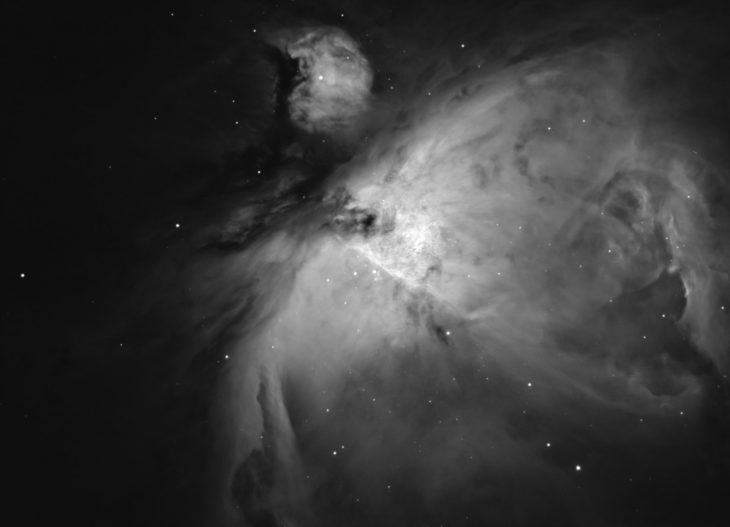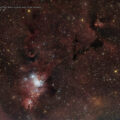M42 Orion Nebula is well known even for people who are not into the astronomy. M42 can be seen with naked eye, and it is probably the most often imaged deep sky object in the night sky, but also the most intensely studied. M42 is placed 1340 light years away and it is the closest region of massive star formation to Earth – there are whole lot of protoplanetary disks, brown dwarfs and turbulent gas motions. Orion Nebula contains a very young open star cluster known as the Trapezium due to the asterism of its primary four stars. These hot and young stars are responsible for ionizing hydrogen around that shines in deep red H alpha band.
Few nights ago I tried to look into these star formation. I shot several images with different exposition times, so the central nebula region would not be oversaturated. I used QHY163M camera with H alpha filter and Meade ACF 10″ f/10 telescope with telecompressor. Transparency was poor, but seeing was quite good.

And below there is M42 nebula center close up – Trapezium asterism is clearly visible, and also quite detailed structure around this stars. This area is so bright that can be easily seen with binoculars even under quite light polluted places. But under dark sky it reveals all its beauty.

Clear skies


